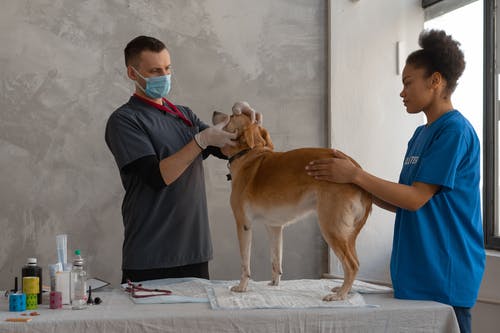As a responsible pet owner, you probably take your furry friend for regular checkups. During these visits, your veterinarian may perform various tests and send samples to a vet diagnostic lab for analysis. Once you receive your pet’s lab results, understanding what they mean can be quite daunting.
In this article, we’ll break down some key indicators found in lab results and explain their significance. We’ll also discuss the role of vet radiology in providing a comprehensive assessment of your pet’s health.
Common Tests Performed by Vet Diagnostic Labs
Vet diagnostic labs perform various tests to assess your pet’s health and diagnose specific conditions. Some of the most common tests include:
1. Complete Blood Count (CBC)
This test determines the number, size, and shape of various blood cells, providing insight into your pet’s immune system, oxygen-carrying capacity, and potential infections.
2. Blood Chemistry Panel
This test evaluates organ function and electrolyte levels, helping to identify issues with the liver, kidneys, or other organs.
3. Urinalysis
This test analyzes your pet’s urine to assess kidney function, detect infections, and identify other potential problems in the urinary tract. You may click this link for a detailed look at common vet diagnostic services.
Key Indicators in Your Pet’s Lab Results
Complete Blood Count (CBC)
The CBC provides valuable information about your pet’s blood cells. Some key indicators in the CBC include:
- Red Blood Cells (RBCs): RBCs carry oxygen throughout the body. A low RBC count can indicate anemia, while a high count may signal dehydration.
- Hemoglobin: This protein in RBCs binds to oxygen. Low hemoglobin levels can also indicate anemia or other blood disorders.
- White Blood Cells (WBCs): WBCs help fight infections and inflammation. An elevated WBC count may signal an infection, while a low count may indicate a weakened immune system.
- Platelets: These cell fragments help with blood clotting. Low platelet counts can indicate bleeding disorders or certain autoimmune diseases.
Blood Chemistry Panel
The blood chemistry panel evaluates your pet’s metabolism and organ function. Some essential indicators include:
- Blood Urea Nitrogen (BUN) and Creatinine: The kidneys filter these waste products. Elevated levels can indicate kidney dysfunction or dehydration.
- Alanine Aminotransferase (ALT) and Aspartate Aminotransferase (AST): These enzymes are related to liver function. Increased levels can signal liver disease or injury.
- Glucose: This simple sugar provides energy for your pet’s cells. Abnormal glucose levels may signify diabetes or other metabolic disorders.
- Electrolytes (sodium, potassium, and chloride): These charged particles help maintain your pet’s fluid balance and cellular function. Imbalances can indicate dehydration, kidney issues, or other problems.
Urinalysis
Urinalysis provides essential information about your pet’s kidney function and urinary tract health. Key indicators in urinalysis include:
- Color and Clarity: The urine’s appearance can indicate dehydration, infection, or other issues.
- Specific Gravity: This measure of urine concentration helps assess your pet’s hydration status and kidney function.
- pH: The urine’s acidity or alkalinity can be affected by diet, medications, or certain medical conditions.
- Protein, Glucose, and Ketones: These substances in the urine can indicate kidney disease, diabetes, or other metabolic disorders.
The Role of Vet Radiology in Assessing Your Pet’s Health
In addition to lab tests, an animal radiologist plays a vital role in diagnosing and monitoring your pet’s health. Imaging techniques like X-rays, ultrasounds, and MRIs provide detailed pictures of your pet’s internal structures, helping to identify abnormalities, injuries, or illnesses that may not be evident through blood tests or physical examinations.
Diagnostic tests also play a crucial role in vet surgery. The diagnostic test results will determine the best approach for veterinary surgical specialists to tackle the condition that needs to be treated.
Final Words
Understanding your pet’s lab results is crucial in maintaining their health and well-being. By monitoring key indicators in blood tests, urinalysis, and vet radiology, you can work with the vet to identify potential health issues early and take necessary steps to address them.
Remember, a well-informed pet owner is an empowered pet owner. You can ensure your furry friend enjoys a happy, healthy life by staying educated about their lab results and working closely with your veterinarian. Don’t hesitate to ask the veterinarian any questions you may have about your pet’s lab results and what they mean for their health. They can help you make the best decisions for your beloved companion.






